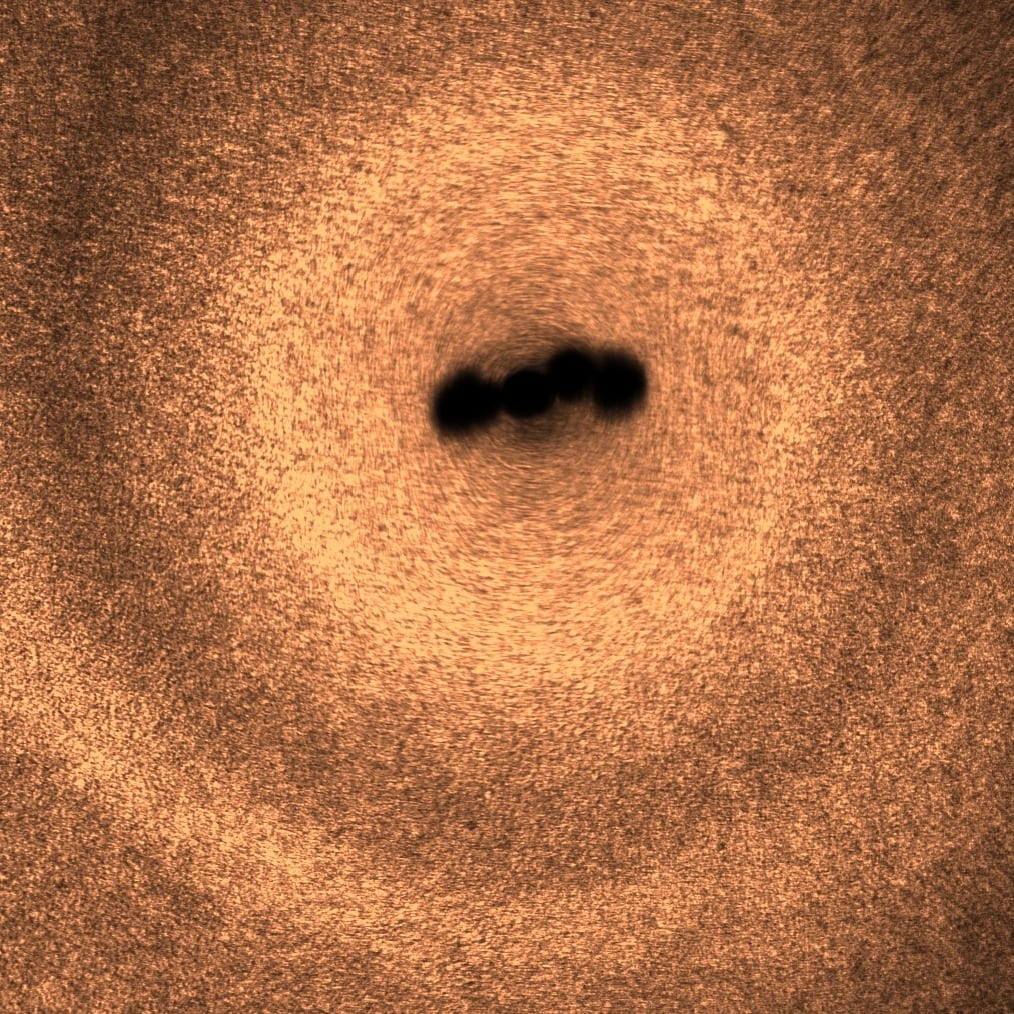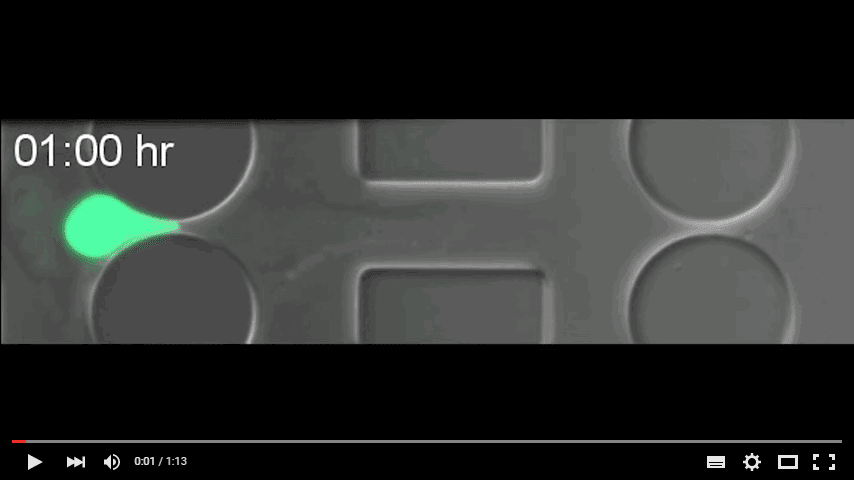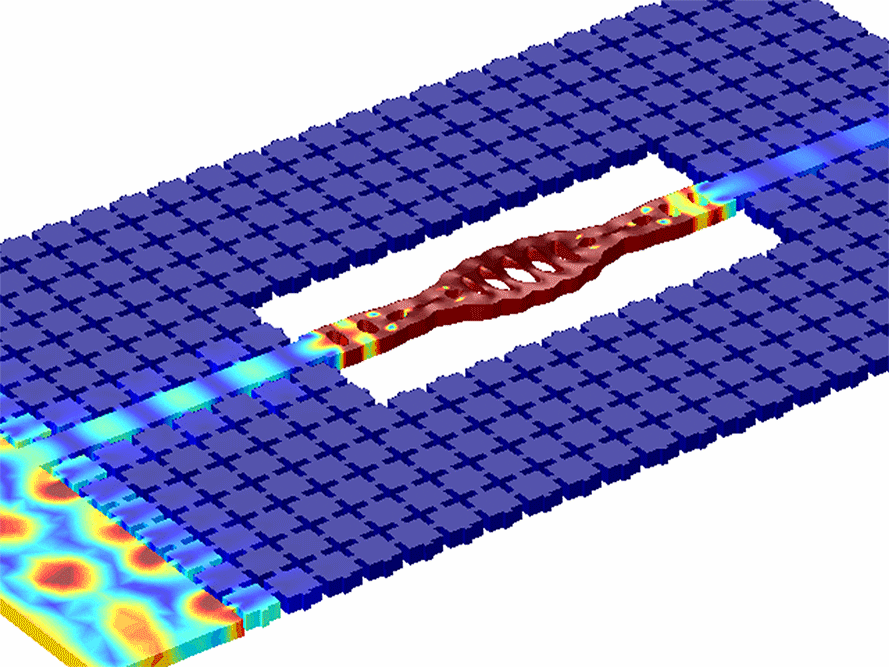
Scientists at the U.S. Department of Energy’s Argonne National Laboratory have discovered a way to use a microscopic swirling flow to rapidly clear a circle of tiny bacteria or swimming robots.
“This discovery offers a new approach for control and manipulation of microscopic swimmers,” said Argonne physicist and co-author Igor Aronson, and it could be useful in tiny microfluidic (“lab-on-a-chip”) devices that can quickly run chemical or biological analyses or perform tasks.
In the study, published in Nature Communications, the researchers placed a magnetic particle in the center of a liquid film filled with swimming bacteria.
Normally the bacteria swim randomly; but when scientists spun the particle by applying a rotating magnetic field, the swimmers shot away from the center, like a school of fish that suddenly realized there’s a shark in their midst.
What’s actually happening is that the particle is rotating, creating a small vortex around itself. The bacteria swim parallel to the stream lines and are quickly pushed outward — except for a few that get sucked in right next to the particle.
They’re not pushed out by centrifugal force, said Argonne scientist Andrey Sokolov, who co-authored the paper; dead bacteria, which aren’t swimming, are not pushed out with their living companions.
“Because of the curvature of the flow, some swim in and are trapped on the rotating particle, and others are forced to swim out of the curved flow,” Sokolov said.
This technique could separate live from dead bacteria, or different species, bacterial strains or mutants from one another. “The shape and swimming rates of different species would mean they separate,” Aronson said.
“At certain frequencies of rotation, the bacteria self-organize into a spiral-shaped halo, creating a microscopic galaxy — similar to our galaxy Milky Way, but trillions of trillions (1024) of times smaller,” Sokolov said.
In addition to new understanding of the forces governing microswimmers and their environments, the vortex technique could help prevent biofilms from forming and disrupting microfluidic devices, the authors suggested.
They are particularly interested in creating systems in which microswimmers could assemble gears to build a tiny machine and then power it, Aronson said.
Aronson and Sokolov also modeled the results theoretically and saw good alignment between computer models and observed results, they said.
Learn more: Moving microswimmers with tiny swirling flows
The Latest on: Microswimmers
[google_news title=”” keyword=”microswimmers” num_posts=”10″ blurb_length=”0″ show_thumb=”left”]
via Google News
The Latest on: Microswimmers
- Ciliary propulsion through non-uniform flowson May 2, 2024 at 6:19 am
The classical paper by Lighthill (Commun. Pure Appl. Maths, vol. 109, 1952, p. 118) on the propulsion of ciliated microorganisms has become the reference against which many modern studies on swimming ...
- MAPHEUS Rocketon April 24, 2024 at 3:19 am
magnetically excited granular matter to investigate the dynamics of free-cooling granular gases, a granular sound experiment, a light scattering and microscopy experiment on active colloidal ...
- Self-Propelled Particles and Active Matteron April 17, 2024 at 8:59 am
Active matter, often referred to as microswimmers, encompasses biological entities like bacteria (e.g., E. coli) and sperm cells. These organisms exhibit dynamic motion by deforming their bodies ...
- Physicists create new method to systematically determine efficient search strategieson April 2, 2024 at 7:44 am
Researchers at TU Darmstadt have now presented an approach in Proceedings of the National Academy of Sciences (PNAS) that can be used to systematically determine efficient search strategies.
- Thermodynamic signatures of collective behaviour in active matteron November 2, 2023 at 12:28 am
Examples include the aforementioned archaea and bacteria, but also artificial microswimmers like colloids with catalytic surfaces or nanorobots. A particular emphasis will be on understanding and ...
- Department of Mechanical Engineeringon May 17, 2022 at 3:58 pm
Research areas include low Reynolds number flow, microswimmers, biological flows and membranes, thin film mechanics, fracture simulation, auxetic metamaterials, and parallel computing. The ...
- Faculty by Research Areaon August 2, 2021 at 11:52 pm
His current research interests include: low-Reynolds-number flows, biological flows, microswimmers, and complex fluids. Visit Dr. Pak's research group page here.
- World’s Smallest Benchy Shows Off What 3D-Printing Can Do For “Microswimmers”on October 26, 2020 at 10:09 am
Of course the diminutive benchmark was not printed just for the sake of it, but rather as part of a demonstration of what’s possible with “microswimmers”, synthetic particles which are ...
- two-photon printingon October 25, 2020 at 5:00 pm
Of course the diminutive benchmark was not printed just for the sake of it, but rather as part of a demonstration of what’s possible with “microswimmers”, synthetic particles which are ...
- ES_APPM 495: Selected Topicson November 6, 2019 at 8:52 am
This course will focus on the hydrodynamics of microswimmers (bacteria, motile colloids). Topics include Stokes equation, scallop theorem, multipole expansion, rheology of active suspensions, active ...
via Bing News










